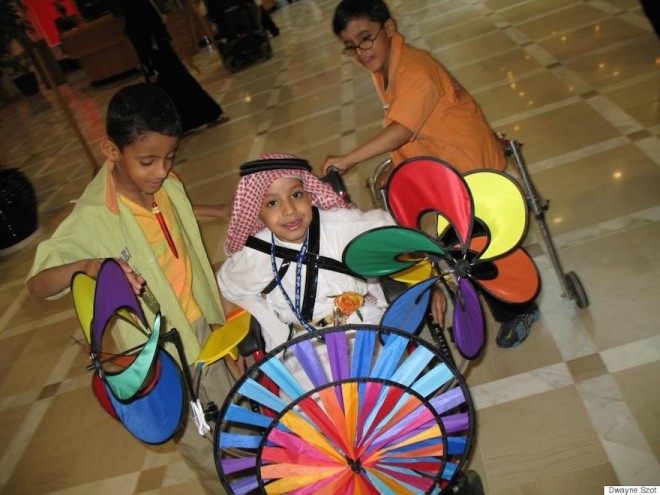Dwayne Szot, founder of Zots Artz, first developed his art roller for wheelchairs with a National Endowment for the Arts grant nearly 30 years ago. Today he has been instrumental in creating tools that offer children with disabilities an imperative learning tool: a creative outlet.
Szot grew up in the foster system where he helped his foster siblings, some with varying disabilities, to adapt to everyday routines. It was this dedication and focus on helping others that sparked the idea to create art tools for kids with limited physical abilities. Szot’s adaptive tools and assistive technology transform wheelchairs into huge paintbrushes, stamps or a chalk drawing instruments, which enable children of all ages to create large or small works of art.
As an artist himself, Szots knew that his life would involve painting, but had no aspirations to be exhibited on gallery walls. Instead he wanted to make a difference through the use of art, and decided to dedicate his life to creating opportunities for children to find the artist within themselves, regardless of their physical capabilities.
Creative expression is a primary human need, necessary for self-fulfillment and self esteem. Art is a form of creative expression in which individuals with disabilities can excel, given the opportunity. - Szot
Many children who are wheelchair-bound have degenerative muscle conditions, which makes holding a pencil or paintbrush tiring and painful. The design of his art roller is simple and although he has vastly improved its usability over the past 30 years, the engineering principle is the same. He attaches a PVC pipe and a print plate to the base of a walker or a wheelchair. The attachment is filled with paint and the user rolls around while the paint is dispensed creating a massive artwork. The design enables a child to create a painting simply by using their walker or wheelchair without having to extend beyond their physical capabilities.
When he is not creating a new art tool, Szot travels around the world, hosting art workshops that show children with a range of physical abilities that with a little imagination, they do not have to be bound by their physical capabilities in order to enjoy the benefits of creative activities.










